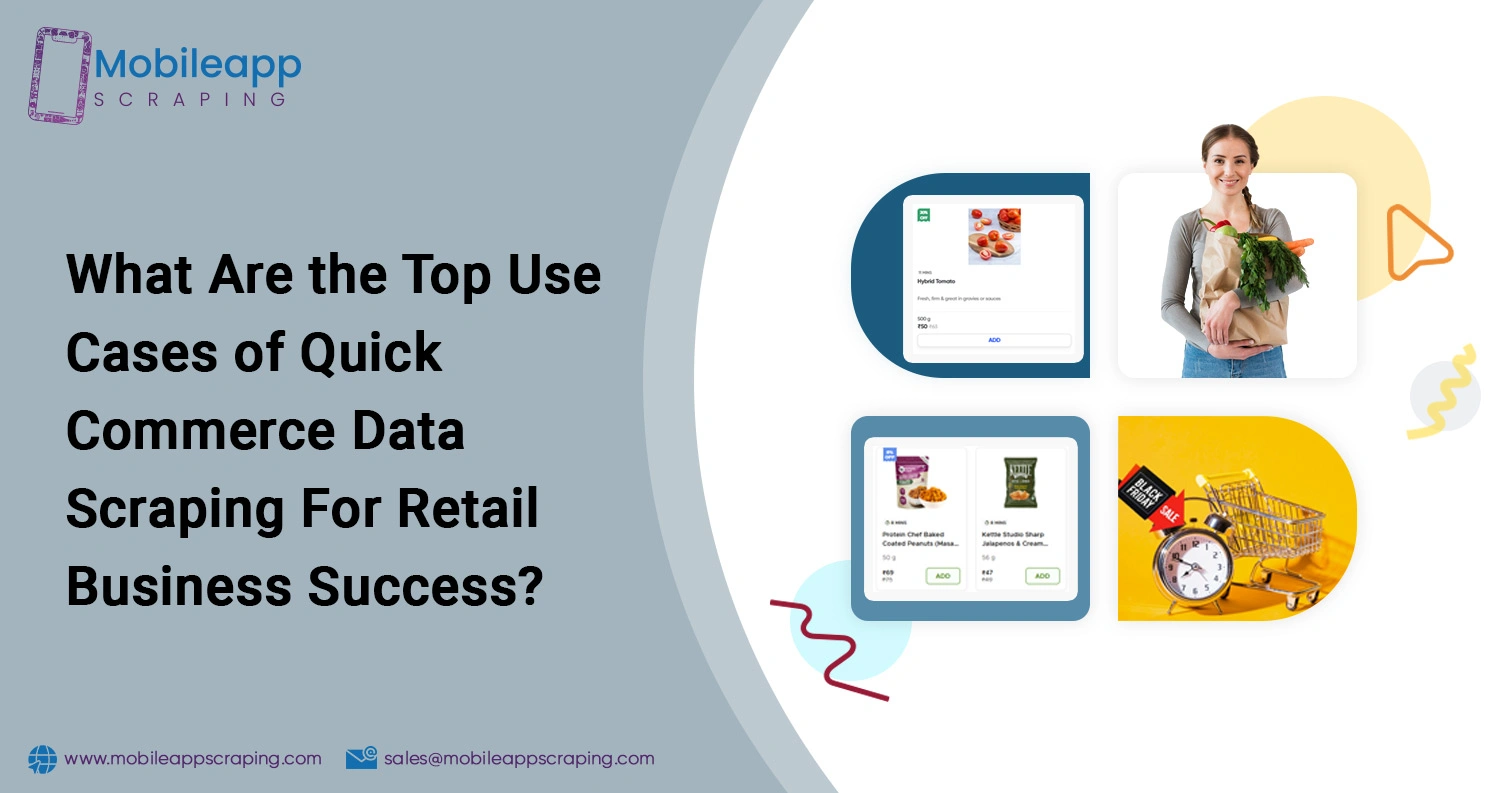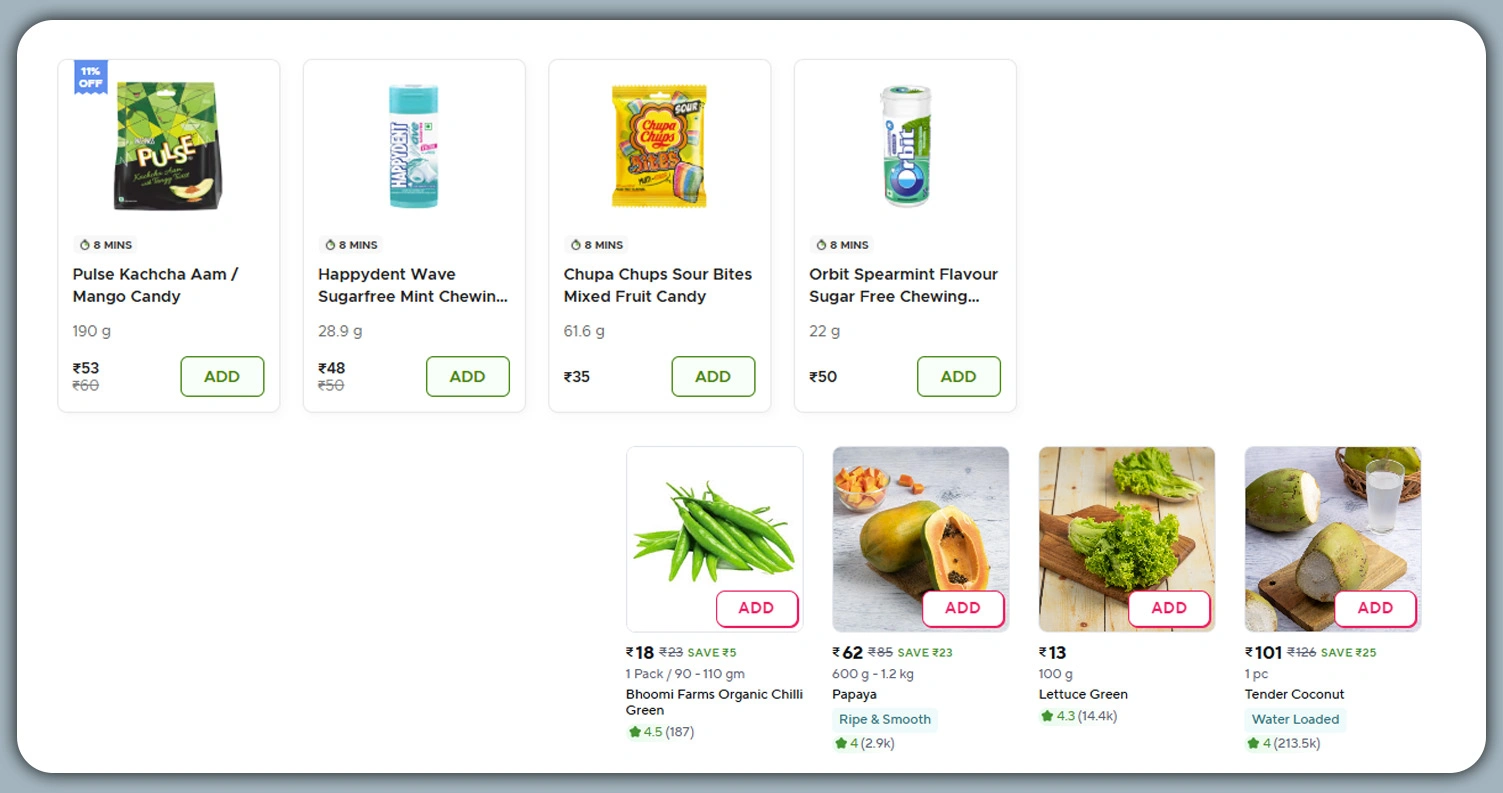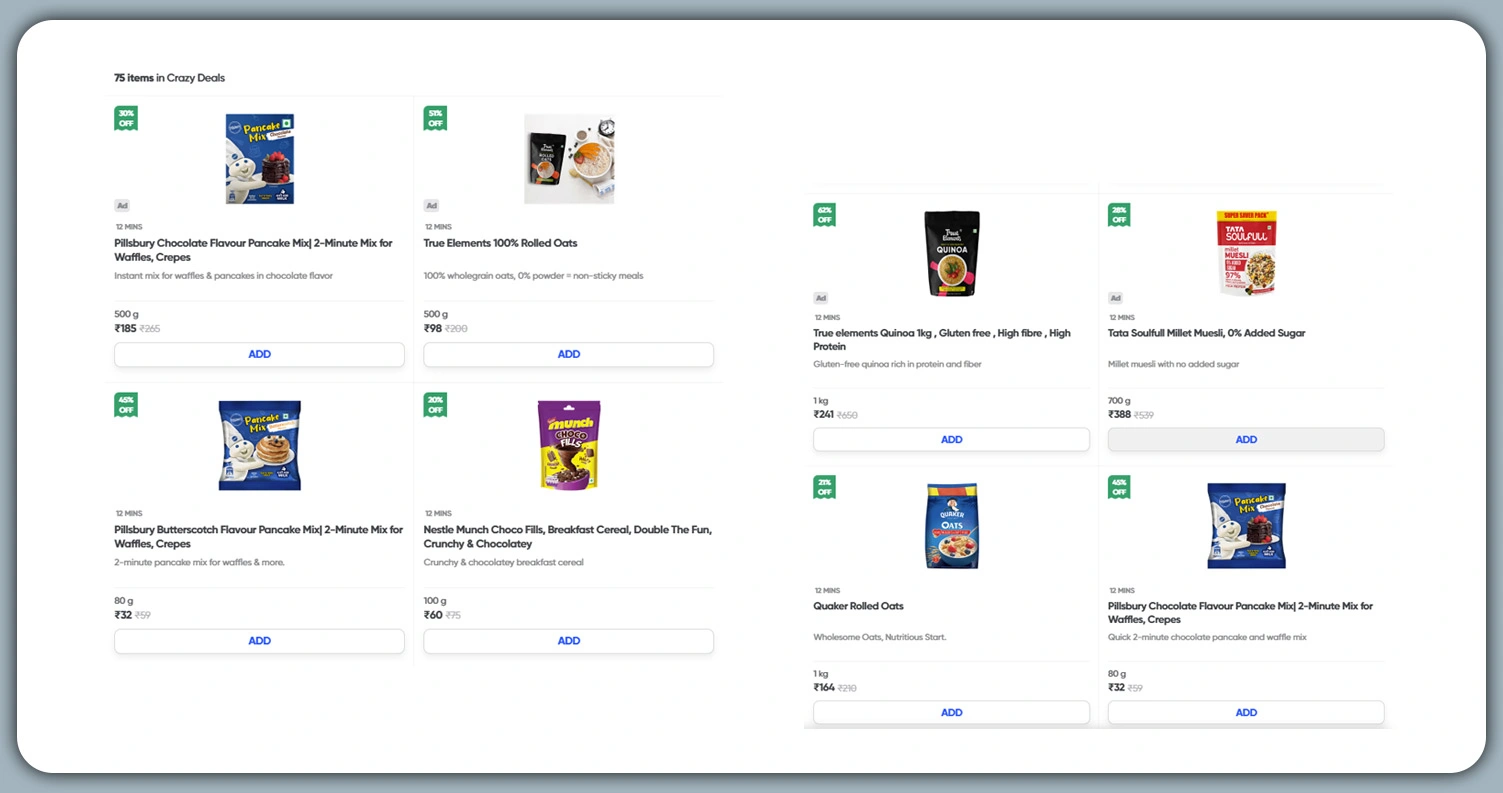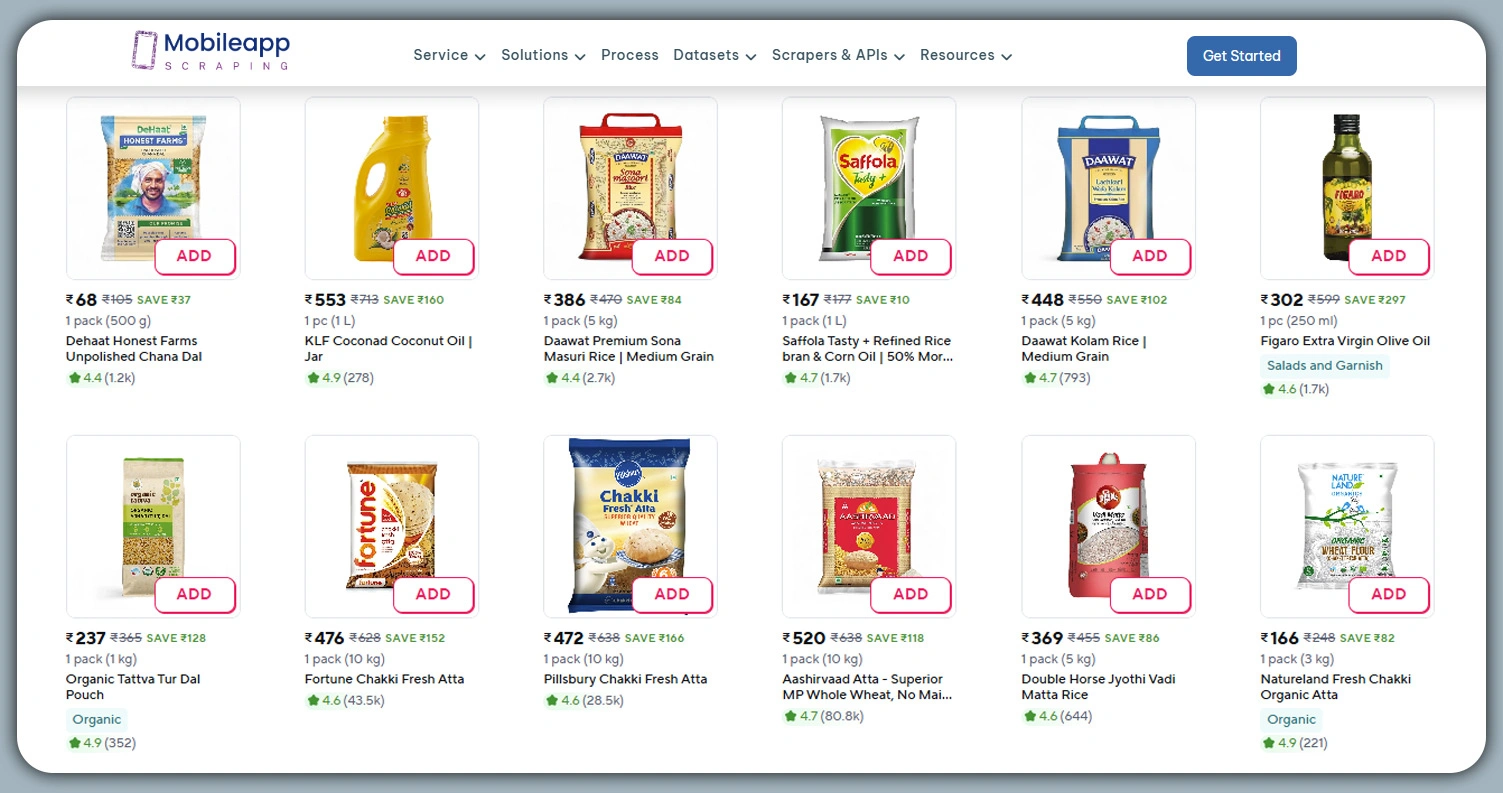
What Are the Top Use Cases of Quick Commerce Data Scraping For Retail Business Success?
Introduction
The retail industry is undergoing a dramatic transformation, driven by the growing demand for speed, convenience, and personalization. At the center of this shift is Quick Commerce (Q-commerce), which has become the backbone of on-demand shopping. In this model, groceries, daily essentials, and consumer products are delivered to customers in a matter of minutes.
This article explores the top 10 use cases of Quick Commerce Data Scraping and data-driven strategies that enable retail businesses to thrive in the new commerce landscape. From enhancing pricing strategies and improving product assortment to boosting customer engagement and streamlining operations, these applications highlight how real-time insights are shaping smarter retail decisions.
Understanding the Need for Real-Time Retail Insights

In traditional e-commerce, businesses often relied on daily or weekly datasets to analyze performance and plan strategies. However, the rapid growth of Q-commerce has shifted the focus toward instant decision-making, where every second impacts revenue and customer loyalty. This is where Quick Commerce Data Scraping plays a critical role, providing businesses with live insights into products, delivery times, dynamic promotions, and changing customer behavior.
By leveraging real-time data, companies can improve operational efficiency, enhance customer experiences, and achieve higher profit margins while staying ahead of competitors. At its foundation, quick commerce is built on micro-fulfillment centers, lightning-fast delivery speed, and the ability to adapt to evolving consumer expectations.
Below are some top use cases to benefit your retail business:
1. Pricing Optimization for Competitive Advantage
Pricing remains one of the most decisive factors influencing customer purchases in quick commerce. Shoppers not only expect faster delivery but also fair and competitive product prices. To stay ahead, businesses are leveraging Zepto Data Scraping For Pricing to track competitor pricing strategies in real time and adjust their own in response.
With actionable competitor price insights, retail managers can:
- Compare discounts, promotional offers, and price drops across different platforms.
- Adjust product pricing instantly to appeal to highly price-sensitive consumers.
- Monitor seasonal demand-driven price fluctuations and align with trends.
- Strike the right balance between profitability and customer satisfaction in competitive markets.
2. Understanding Consumer Shopping Behavior
Unlike traditional e-commerce, customer behavior in Q-commerce revolves around speed, convenience, and impulse-driven purchases. Brands are adopting Q-Commerce Data Extraction to uncover insights into customer shopping patterns such as purchase frequency, favorite product categories, and triggers behind cart abandonment.
These insights help businesses:
- Personalize product bundles to match customer needs.
- Recommend complementary items based on recurring buying habits.
- Predict future shopping patterns to encourage repeat orders.
- Improve retention by addressing friction points in the checkout journey.
3. Competitor Benchmarking Across Platforms
With the growing number of Q-commerce players, competition for consumer loyalty is fierce. Companies use data intelligence tools to Scrape Blinkit And Zepto Data for competitor benchmarking. This allows businesses to assess pricing, delivery timelines, product range, and service efficiency against rivals.
Competitor benchmarking enables brands to:
- Identify competitive gaps in delivery speed, assortment, and pricing.
- Shape promotional strategies aligned with market conditions.
- Optimize inventory stocking to match or outperform competitors.
- Strengthen customer acquisition by positioning themselves more effectively.
4. Delivery Fee Comparison Across Cities
Delivery fees significantly influence purchasing decisions in quick commerce. Retailers now analyze structured data to Scrape Delivery Fees By Cities in 2025, enabling them to fine-tune fee structures without sacrificing profit margins.
This approach allows businesses to:
- Understand city-specific sensitivity to delivery charges.
- Offer targeted discounts in competitive zones to capture market share.
- Optimize delivery cost structures for sustainable operations.
- Maintain profitability while offering value-driven pricing models.
5. Product Availability and Inventory Planning
Cart abandonment in Q-commerce often stems from product unavailability. To combat this, businesses rely on solutions to Scrape Product Availability Data, ensuring consistent product access for consumers and reducing sales loss.
By analyzing availability trends, retailers can:
- Identify frequently out-of-stock products and secure them proactively.
- Collaborate effectively with suppliers to maintain a steady inventory.
- Anticipate demand spikes during festivals or seasonal events.
- Prevent missed sales opportunities by keeping high-demand items in stock.
6. Data-Driven Store Network Expansion
Quick commerce thrives on hyper-local dark stores and fulfillment hubs. With Dark Store Analytics, businesses can strategically plan expansion into areas with strong growth potential while optimizing existing operations.
Through this approach, companies can:
- Analyze population density and local demand hotspots.
- Measure order frequency to prioritize high-performing zones.
- Assess competitor store coverage for smarter expansion.
- Reduce delivery timelines, directly boosting customer satisfaction.
7. Demand Forecasting and Assortment Planning
Anticipating customer needs before they arise is the next frontier in Q-commerce. Using On-Demand Delivery Data Scraping, businesses can accurately forecast demand and plan assortments that resonate with local preferences.
This enables retailers to:
- Align product mix with customer lifestyle and cultural trends.
- Predict seasonal or festival-driven surges with higher accuracy.
- Plan promotions and product launches ahead of demand shifts.
- Minimize waste by stocking what customers want.
8. Tracking Competitor Promotions and Discounts
Promotions, coupons, and discounts are powerful levers in the quick commerce industry. By using E-Grocery Competitive Intelligence, businesses can track competitor deals across platforms and respond effectively.
This data helps brands to:
- Launch timely promotions tailored to counter competitor campaigns.
- Monitor discount frequency and analyze the average savings offered.
- Measure the impact of promotions on customer loyalty and repeat sales.
- Optimize marketing spend by targeting discounts where they deliver maximum ROI.
9. Enhancing Real-Time Stock Visibility
In quick commerce, customers expect immediate availability. Brands now rely on advanced scraping methods to capture real-time inventory data, ensuring that product listings are always accurate and up to date.
With improved stock visibility, businesses can:
- Prevent customer frustration by avoiding false stock-outs.
- Streamline restocking cycles with accurate inventory insights.
- Optimize warehouse operations to match real-time demand.
- Lower overheads by reducing unnecessary inventory buildup.
10. Delivery Time and Logistics Optimization
Speed of delivery defines success in Q-commerce. Businesses are now leveraging E-Commerce Delivery Time Analytics to track their logistics performance against competitors and make operational improvements.
These insights allow businesses to:
- Pinpoint delivery delays in specific regions or routes.
- Enhance rider route planning for faster fulfillment.
- Maintain customer trust with precise, real-time delivery ETAs.
- Integrate Quick Commerce API Data into dashboards for instant logistics adjustments.
The Role of Live Inventory Insights in Quick Commerce
In the fast-paced world of Q-commerce, customer trust is directly tied to stock accuracy. When products are shown as available but fail during checkout, it leads to frustration and damages brand credibility. To overcome this, retailers increasingly rely on technology to Scrape Real-Time Inventory Data, ensuring alignment between product listings and actual stock levels.
| Objective | How It Helps Retailers |
|---|---|
| Match product listings with actual stock | Reduces order cancellations and provides a seamless shopping experience for customers. |
| Monitor high-demand, fast-moving items | Supports timely replenishment and avoids missed sales opportunities. |
| Avoid overstocking of low-demand goods | Lowers storage expenses and keeps supply chain operations optimized. |
| Build customer trust through accuracy | Strengthens reliability of instant delivery services, driving long-term customer loyalty. |
Additional Insights Driving Retail Transformation

Beyond the core applications, retailers are increasingly exploring innovative, data-driven strategies to stay competitive in the fast-moving digital commerce landscape:
- Retailers are adopting Online Grocery Scraping Services to strengthen and diversify their grocery assortment, ensuring consumers have access to broader product ranges.
- Businesses are investing in Q-Commerce Price Scraping to monitor real-time price elasticity, enabling more innovative pricing strategies that respond instantly to market fluctuations.
- Companies often rely on Scrape Swiggy Instamart Data to analyze promotions, discounts, and assortment variations across top platforms for better competitive benchmarking.
These evolving practices demonstrate how critical precise and scalable data extraction has become in shaping the future of quick commerce success.
How Mobile App Scraping Can Help You?

We specialize in delivering advanced Quick Commerce Data Scraping solutions that empower retail brands to extract meaningful insights from fast-moving Q-commerce platforms. Our approach enables businesses to track competition, analyze consumer demand, and refine their strategies with precision.
Here’s how our expertise supports your business:
- Gather structured datasets from multiple Q-commerce platforms.
- Track competitor prices, discounts, and promotions.
- Monitor delivery times, fees, and regional performance.
- Identify stock availability and replenishment trends.
- Provide customized, easy-to-use reports.
- Automate large-scale data collection with precision.
By simplifying access to reliable datasets, we help retailers strengthen pricing, delivery, and assortment strategies. With expertise in E-Grocery Competitive Intelligence, our solutions deliver an edge that drives measurable growth.
Conclusion
Retailers aiming to succeed in today’s rapid delivery economy must rely on accurate insights from Quick Commerce Data Scraping to refine pricing, optimize assortments, and anticipate shifting consumer needs. Data-driven decisions are no longer optional—they’re essential for maintaining a competitive edge.
We give your business the ability to act faster, adapt smarter, and grow sustainably. From grocery insights to Q-Commerce Price Scraping, our tailored solutions provide the intelligence you need. Contact Mobile App Scraping today to learn how our experts can help streamline your retail operations and strengthen your strategy for long-term success.